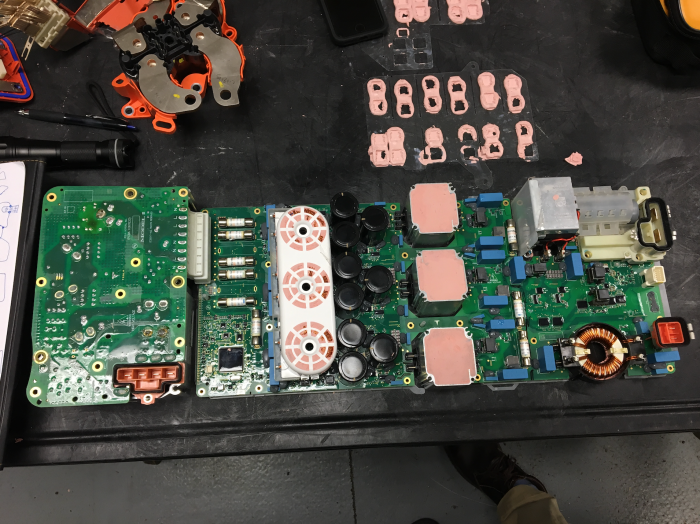
A media report asserting that Tesla has quietly added hardware support for bidirectional AC charging in existing Tesla Model 3 cars was ‘debunked” today by a well-regarded electrical engineer in the EV community.
Phil Sadow, who often goes by the moniker Ingineerix online, posted a video to his YouTube channel challenging some aspects of the report carried by Electrek on Tuesday.
In a brief phone conversation today, the original source for Electrek’s article told Electric Revs that Sadow is probably right and that he may well have misidentified some circuit board parts but no longer has access to the original circuit boards in order to re-inspect the parts closely.
The Electrek article quoted that engineer, Marco Gaxiola, who had access to an early Model 3 vehicle teardown while working at a past job. The same information from Gaxiola in that Electrek report was previously used as the basis for an Electric Revs article last November speculating about whether Tesla would use a bidirectional charger to support high power AC outlets in its impending Cybertruck reveal on November 21 last year.
See also: Tesla plans to innovate AC power outlets on Cybertruck
Although Tesla confirmed the Cybertruck will indeed have high-powered AC outlets during that introduction event it has been silent so far on whether the vehicle will use a separate dedicated AC inverter or whether it will use a bidirectional charger (perhaps adapted from the Model 3) as speculated in the Electric Revs report.
Sadow has now posted a further update video giving further context:
The recent Electrek article went somewhat further, and discussed the possible ability for existing Model 3 vehicles to be updated via an over-the-air software download perhaps as part of a grand plan with “massive implications” around seamless electrical grid integration.
Sadow posted a series of videos last year to his YouTube channel showing his own teardown of a Model 3 and explaining the technical aspects of various components within the car. One of those videos shows the battery charger.
In Sadow’s “debunking” video posted Wednesday night, he stated that the existing Model 3 circuit board uses diodes in one part of the power conversion circuitry that Gaxiola assessed to be power transistors. Diodes inherently can only pass current in one direction while transistors could be controlled to allow bidirectional flow.
In an exchange today with Sadow on an EV club email list, Gaxiola wrote:
Looked at your video and I think you are right… if those components on the final stage at the DC output are diodes, yes you are right. It couldn’t be bidirectional like I said.My only hope is that, if those are diodes; those could be swappable for switches (either MOSFETs or IGBTs) and all the surrounding electronics could support it…
The confusion over the whether these parts are diodes or transistors is largely due to their similar physical appearance and because they are apparently custom parts that cannot easily be looked up in standard parts catalogs.
In the video, Sadow appears to believe that Tesla’s design for that section of circuitry could be updated to use transistors in future vehicles thereby enabling the hardware to be bidirectional in combination with software changes and perhaps other peripheral hardware changes.
https://electricrevs.com
